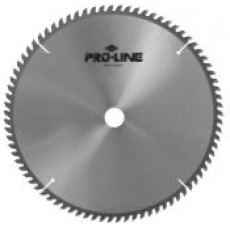
Choosing and Caring for Carbide Tipped Saw Blades
When it comes to your saw blades, finding the right one for the job is important. You also want to make sure that you are keeping it in the best shape possible to ensure it lasts. Here are some ideas for choosing which blades are right for you and ways you can extend their life:
· Royce Proline. Canadian-made to industry specifications, these blades were created for high-end hobby and contractor use, and they have become extremely popular.
· Royce Industrial. Designed for use in commercial shops, these Canadian-made blades stand up to the highest standards
· Royce Ultima. Going a step beyond the Royce Industrial, the Ultima is more resistant to corrosion and abrasion. They are an excellent choice for high-wear applications, as well as for cutting man-made materials, and also Made in Canada.
How to Extend the Life of Your Blades
Finding the right blades is just the first step; you will want to get the most out of your investment. Having to replace your blades frequently becomes expensive, so extending their life will save you considerable money. Here are some tips that can help you do just that:
· Inspect Often. Examine your blades for broken or missing carbide tips as these can be repaired when you take your blades in for sharpening. Also pay attention to weather the blade is running “true” on the saw. If it wobbles it is bent, warped or mounted incorrectly. Often times a bent or warped blade can also be repaired while being sharpened but this will depend on both the quality of the blade and the skill level of your saw filer.
· Sharpening. Knowing when to take your blades off for sharpening is just as important as who you take them into for sharpening. Some signs that it is time to take your blade in for servicing are that it is getting harder to push the material through the blade or you notice signs of overheating. A great way to check your blade is to thoroughly clean one or more of the tips and hold the blade under a bright light. Move the blade around to see if you can notice a reflection of light coming off the very tip of the blade. A sharp point does not reflect light whereas a dull “rounded” tip will reflect light. Choosing where to get your blade sharpened really depends on who you have available in your local area. Ideally you want the blades sharpened on equipment similar to what it was manufactured with. The best machines are “CNC” (Computer Numerically Controlled) and there are some very good “NC” (Numerically Controlled) machines as well. Avoid if you can, firms that use smaller table top grinders as they really cannot produce the results you need for optimal performance.
· Dry Coat Lubricant. This Teflon based lubricant serves a dual purpose. It helps to prevent the build-up of pitch and gum on your cutting tools (when applied to the tool prior to use) and is an effective lubricant for your power tool cutting surface. Spray directly on to the cutting edge of your blades and also on to your table saw top, or the bed of your jointer or planer, and your material will glide over the tool with far less friction.
· Proper Application. This comes down to selecting the right tools for the job. Make sure that you are using the appropriate blade for your application. Using the wrong blade can not only result in a poor job, but might also wear down your blades before their time. The most common error is having too many teeth, especially when ripping solid wood.
· Ensure the Material is Well-Secured. If the material being cut should happen to vibrate or otherwise not be well-secured, it puts undue stress on the blade and can cause issues such as tooth chipping and even the complete loss of a carbide tooth. Make sure your material is secured properly before you begin.
· Don’t Rush. Try not to be in too much of a hurry. Let the blade reach its full speed before you begin the cut. Allow the teeth to make the cut, rather than trying to speed things up by adding pressure.
By carefully choosing and caring for your blades, you can get the most out of your investment.

 Posted by
Posted by

